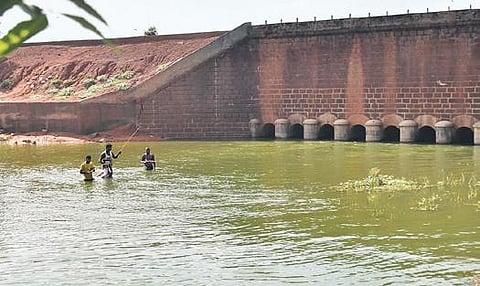

CHENNAI: In a move to secure Chennai’s future water supply, Water Resources Department is drafting a detailed plan to boost Cholavaram lake’s storage capacity from 18.86 feet to 22 feet, increasing storage capacity threefold.
The lake serves as a vital drinking water source for Chennai and its suburbs with its storage capacity of 1.081 tmcft. A senior WRD official told TNIE, “We have initiated steps to obtain preliminary feasibility reports for expanding the lake’s capacity. The WRD is devising a strategy to desilt the lake and increase its capacity to 3 tmcft. The department has already discussed this matter with the government. Once preliminary feasibility reports are finalised, funds can be allocated.”
Discussing the city’s future water demands, another WRD official said, “Currently, Chennai requires 20,000 million cubic feet of water annually. However, our existing reservoirs, including Poondi, Cholavaram, Red Hills (Puzhal lake), Chembarambakkam, Veeranam, and Thervoy Kandigai, can only store 13.213 tmcft. The city’s needs may soon rise to 25,000 million cubic feet per year.”
There is a pressing need to increase water storage capacities in and around the city and construct new reservoirs. In addition to the efforts to expand Cholavaram lake, the WRD has initiated projects in smaller waterbodies to enhance capacity. Over the next five years, plans are under way to store 20 tmcft of water in and around the city, the official said.
Professor S Janakarajan, a water expert, told TNIE, “While augmenting existing drinking water reservoirs is crucial, conserving rainwater is equally vital. The most effective way to achieve this is by transforming lakes into reservoirs.”
Considering the critical aspect of rainwater management, measurement of tmcft or mcft of water stored during the rainy season is crucial. However, the state government has not yet initiated the collection of data, Janakarajan said.
“Approximately 90% of rainwater flows into the sea. Historically, there were thousands of tanks in Chennai, Tiruvallur, Kancheepuram and Chengalpattu districts. Regrettably, the WRD now maintains only a few of them. Identifying and restoring these tanks is imperative to preventing floods and harnessing rainwater effectively,” he said.